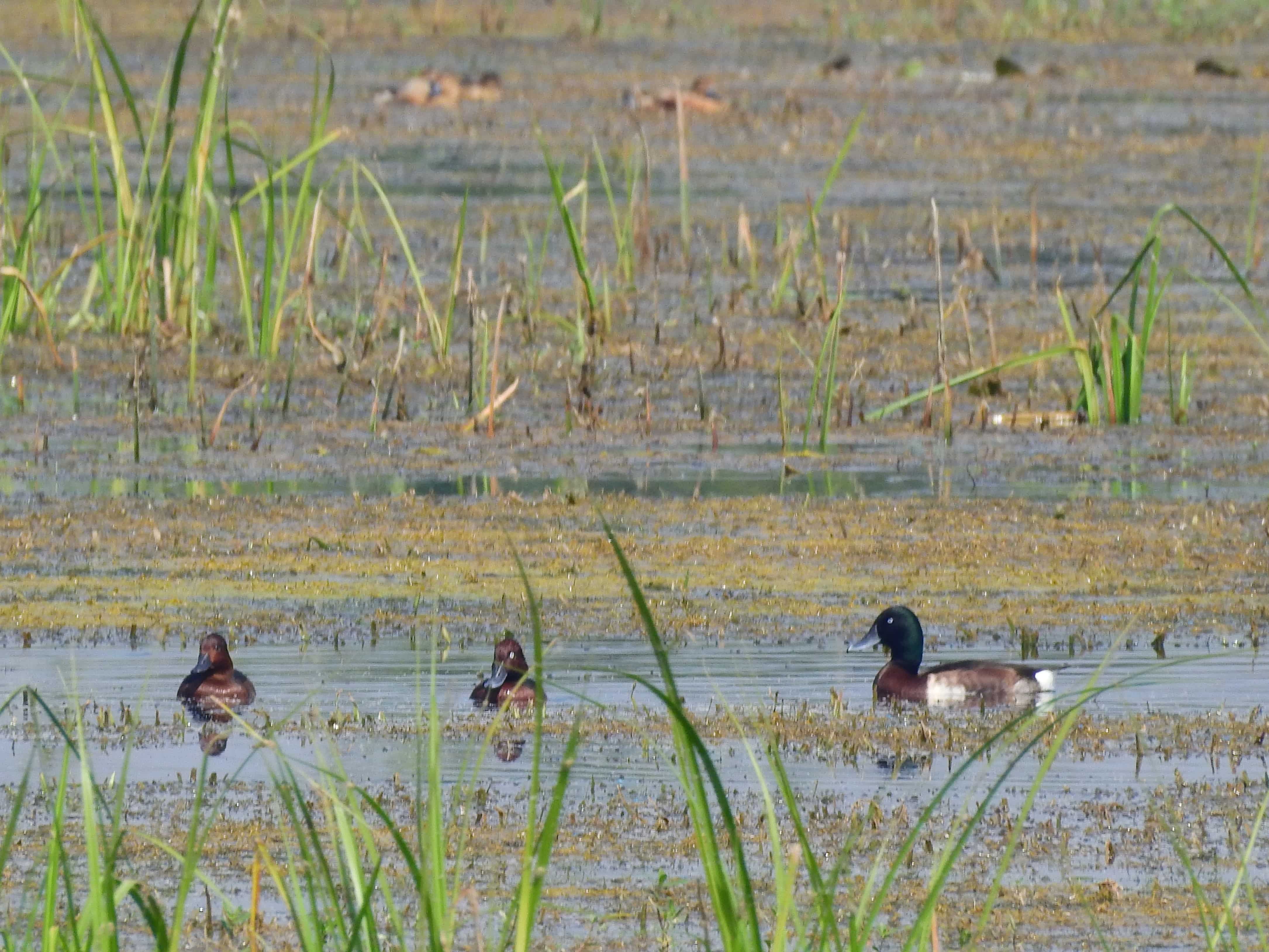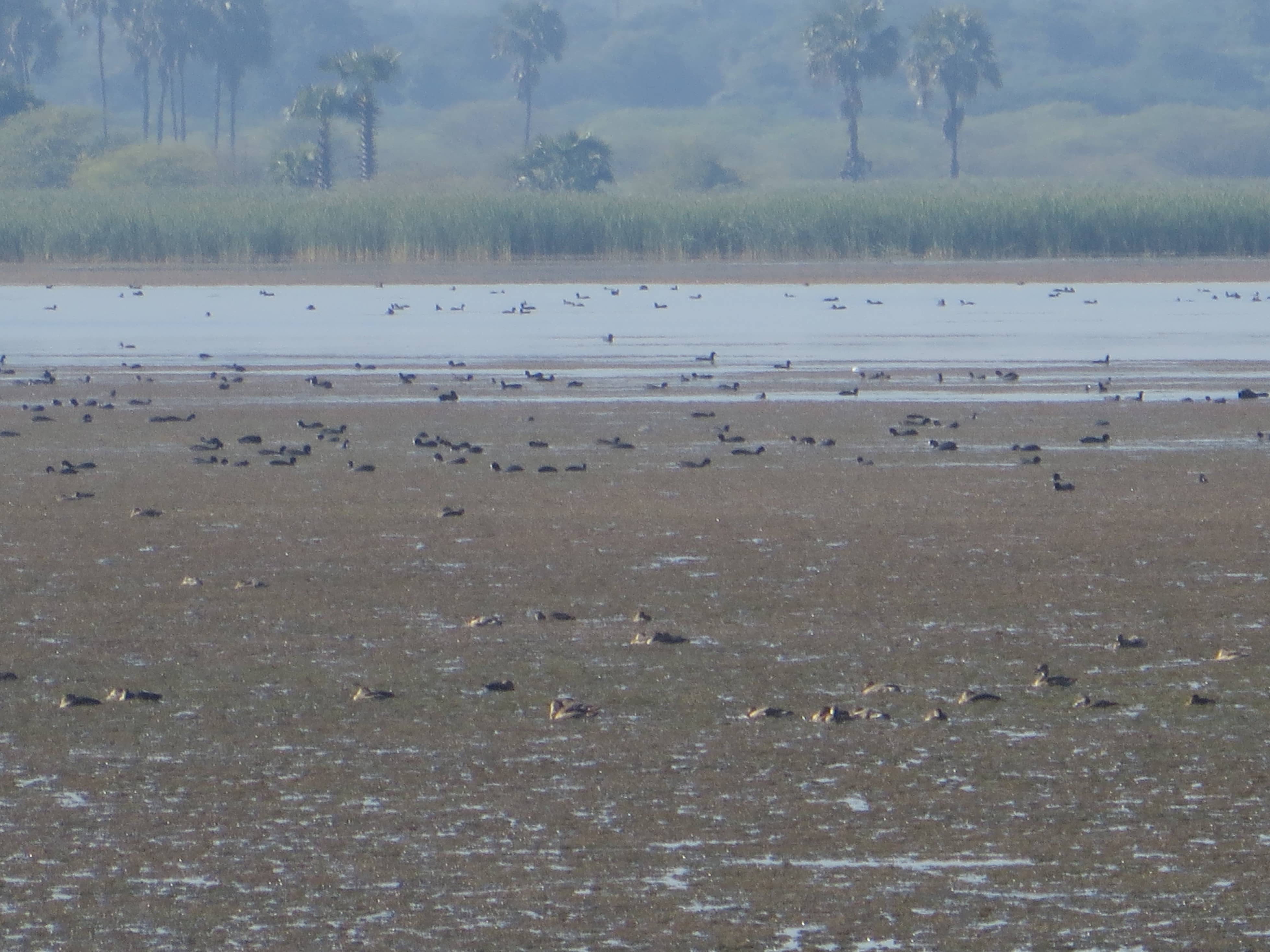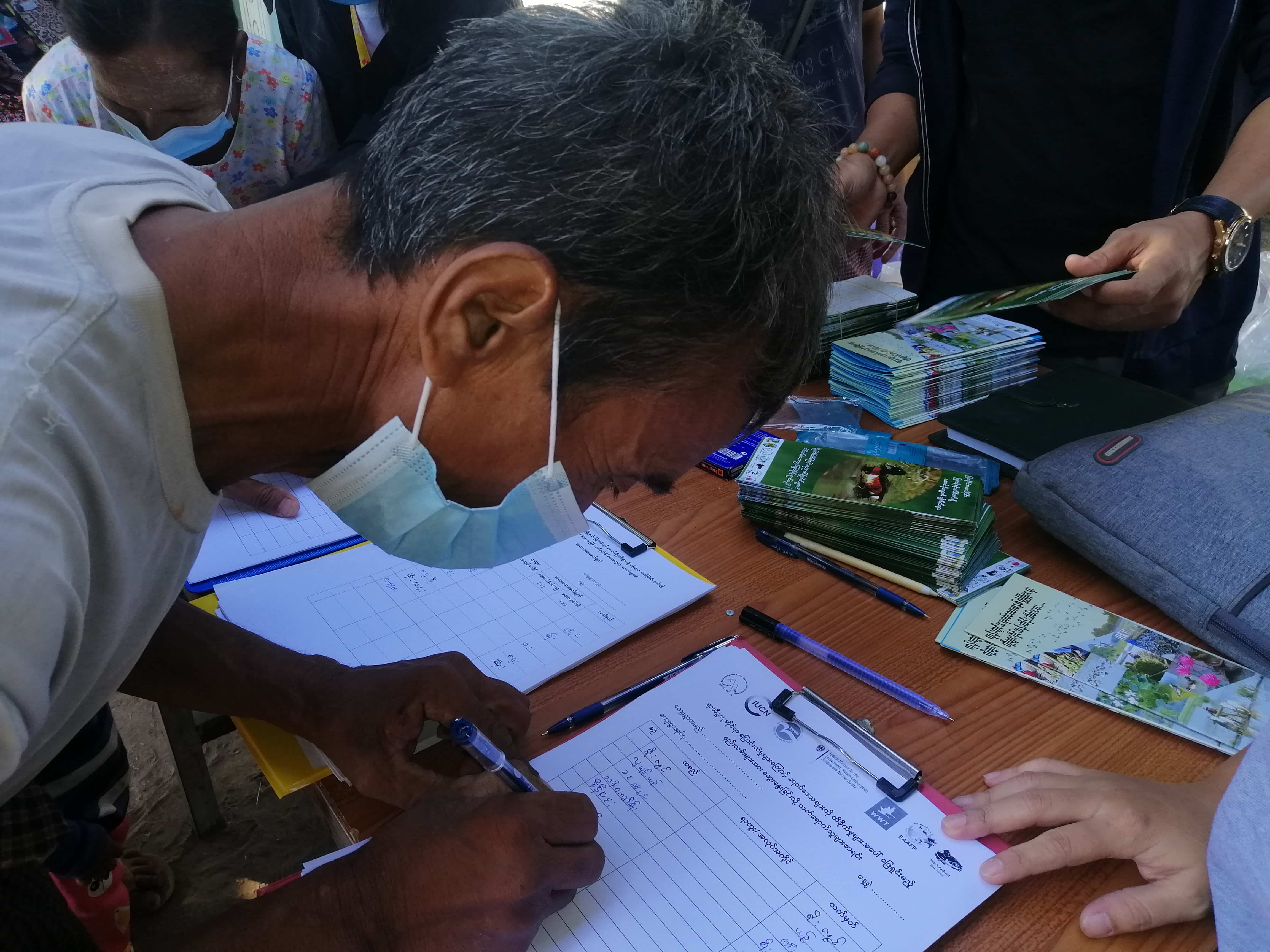Communities Drive the Designation of Pyu Lake as Myanmar’s Newest Ramsar Site
Pyu Lake, located in the heart of Myanmar, has secured two consecutive ‘wins’ for its conservation over the past year. Following the designation of the site as a Flyway Network Site with the East Asian Australasian Flyway Partnership (EAAFP) on 16 November 2023, the lake was designated as the 7th Ramsar site on 2 February 2024.
 Baer’s Pochard and Ferruginous Pochard spotted in Pyu Lake
Photo: BANCA
Baer’s Pochard and Ferruginous Pochard spotted in Pyu Lake
Photo: BANCA
“The designation of Pyu Lake as a Ramsar site and Flyway Network site can help to highlight the value of wetlands for biodiversity and livelihood security in Myanmar,” Dr Thiri Dae We Aung, Director, Biodiversity and Nature Conservation Association (BANCA), highlighted.
The site’s designations help to raise the profile of the value of Pyu Lake at the local and national level, as well as a Wetland of International Importance globally. The Flyway Network Site designation demonstrates the site’s value within the flyway, which extends from Arctic Russia and North America to the southern parts of Australia and New Zealand.
Myanmar has historically hosted an important wintering population of the critically endangered Baer’s Pochard (Aythya baeri). Since 2016, BANCA, an IUCN Member in Myanmar, has conducted surveys for the Baer’s Pochard in 33 inland lakes across Central Myanmar, monitoring its population and distribution among other migratory water bird species, and the threats they’re facing.
 Thousands of migratory bird species gather in Pyu Lake every year
Photo: BANCA
Thousands of migratory bird species gather in Pyu Lake every year
Photo: BANCA
The results demonstrate that Pyu Lake, a 234 hectare manmade permanent freshwater wetland constructed primarily for irrigation, is a critical habitat for the Baer’s Pochard and other migratory waterbirds, including the vulnerable Common Pochard (Aythya ferina) as well as the near threatened Ferruginous Pochard (Aythya nyroca), Falcated Duck (Anas falcata), Black-headed Ibis (Threskiornis melanocephalus) and Oriental Darter (Anhinga melanogaster), meeting Criterion 2 of the Ramsar Convention on rare species and threatened ecological communities.
Pyu Lake also provides critical ecosystem services to seven surrounding villages, including the provision of food and water, while acting as a buffer against floods and droughts. The central dry zone is the most water stressed region in Myanmar, and one of the most food insecure in the country. Climate change is expected to exacerbate these challenges, amplifying the importance of conserving Pyu Lake for both biodiversity and local communities.
In 2017, BANCA worked with local communities to establish the Shwe Kanthayar Nature Conservation Association (SKNCA) to conserve Pyu Lake as a habitat for the Baer’s Pochard. The association - which is officially registered with the government - is made up of local people living in the nearby Pyu Kan village who are working to address the unsustainable use of Pyu Lake and nearby freshwater wetlands through community-based conservation efforts.
 Local community members sign the recommendation of Ramsar designation in Pyu Kan village
Photo: BANCA
Local community members sign the recommendation of Ramsar designation in Pyu Kan village
Photo: BANCA
Strengthening the capacity of community-based associations is critical for effective conservation of the remaining wetlands in the region. SKNCA has led awareness programmes on the relationship between ecosystem health and communities by promoting a sustainable lake management strategy that benefits both people and biodiversity. Through SKNCA, local communities worked directly with the local government to ensure effective conservation and enforcement of the site, which led to the site’s nomination and designation as a Ramsar Site. To further strengthen the management of the site, BANCA is promoting the establishment of a wetland management committee and the development of a management planning framework for wetland conservation and livelihood security.

